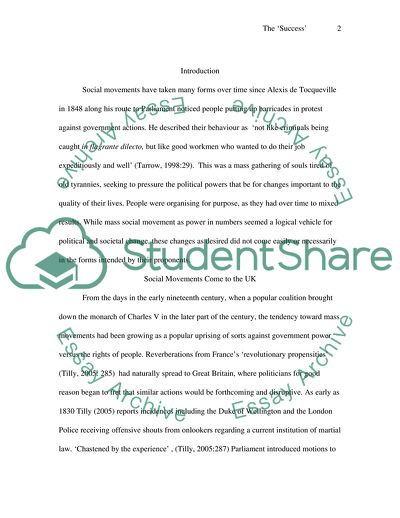Cite this document
(How is the 'success' or 'effectiveness' of social movements best Coursework - 1, n.d.)
How is the 'success' or 'effectiveness' of social movements best Coursework - 1. https://studentshare.org/sociology/1749654-how-is-the-success-or-effectiveness-of-social-movements-best-evaluated-discuss-with-reference-to-the-chartist-and-womens-suffrage-movements-to-the-achievement-of-universal-suffrage-in-britain
How is the 'success' or 'effectiveness' of social movements best Coursework - 1. https://studentshare.org/sociology/1749654-how-is-the-success-or-effectiveness-of-social-movements-best-evaluated-discuss-with-reference-to-the-chartist-and-womens-suffrage-movements-to-the-achievement-of-universal-suffrage-in-britain
(How Is the 'success' or 'effectiveness' Of Social Movements Best Coursework - 1)
How Is the 'success' or 'effectiveness' Of Social Movements Best Coursework - 1. https://studentshare.org/sociology/1749654-how-is-the-success-or-effectiveness-of-social-movements-best-evaluated-discuss-with-reference-to-the-chartist-and-womens-suffrage-movements-to-the-achievement-of-universal-suffrage-in-britain.
How Is the 'success' or 'effectiveness' Of Social Movements Best Coursework - 1. https://studentshare.org/sociology/1749654-how-is-the-success-or-effectiveness-of-social-movements-best-evaluated-discuss-with-reference-to-the-chartist-and-womens-suffrage-movements-to-the-achievement-of-universal-suffrage-in-britain.
“How Is the 'success' or 'effectiveness' Of Social Movements Best Coursework - 1”. https://studentshare.org/sociology/1749654-how-is-the-success-or-effectiveness-of-social-movements-best-evaluated-discuss-with-reference-to-the-chartist-and-womens-suffrage-movements-to-the-achievement-of-universal-suffrage-in-britain.


